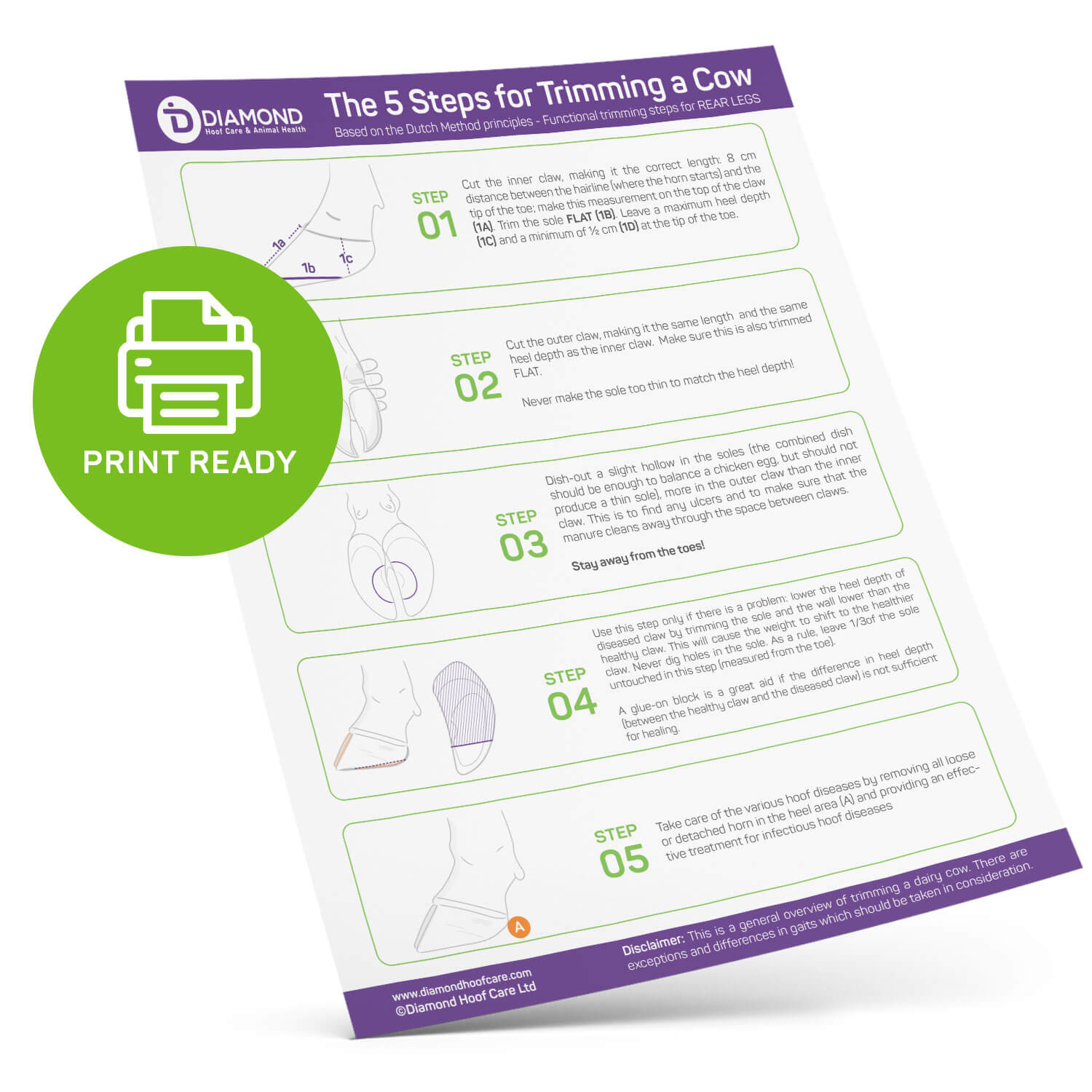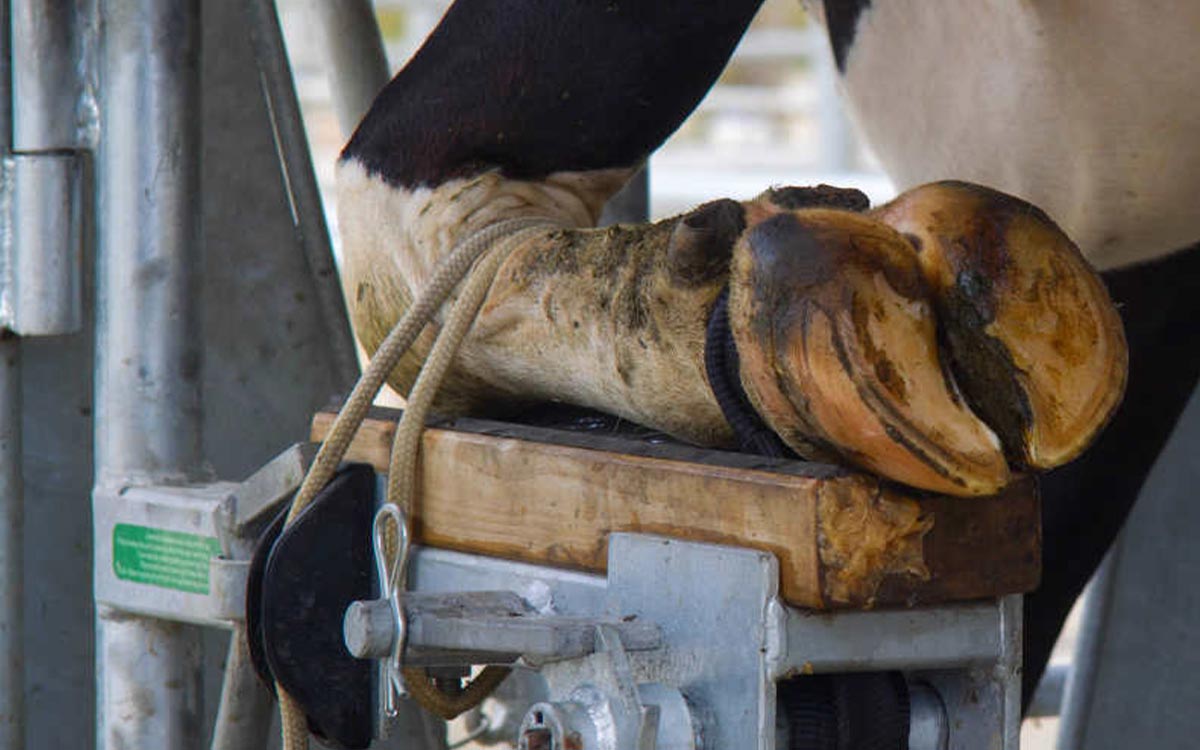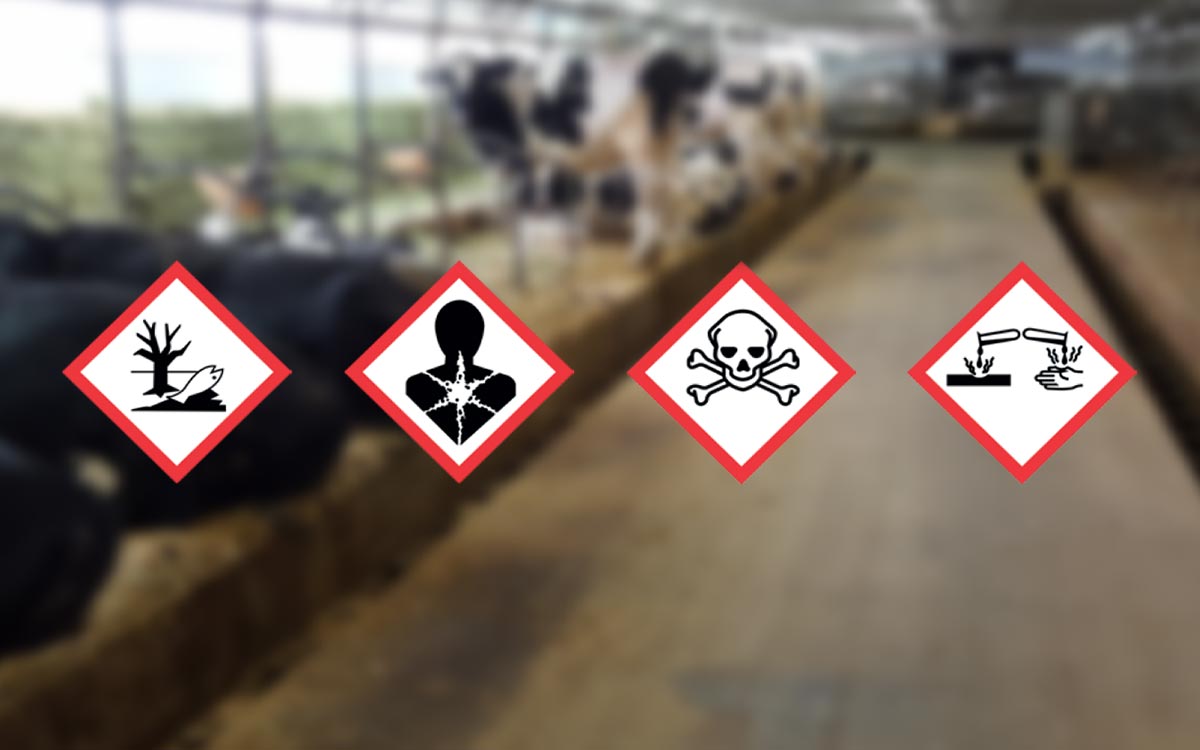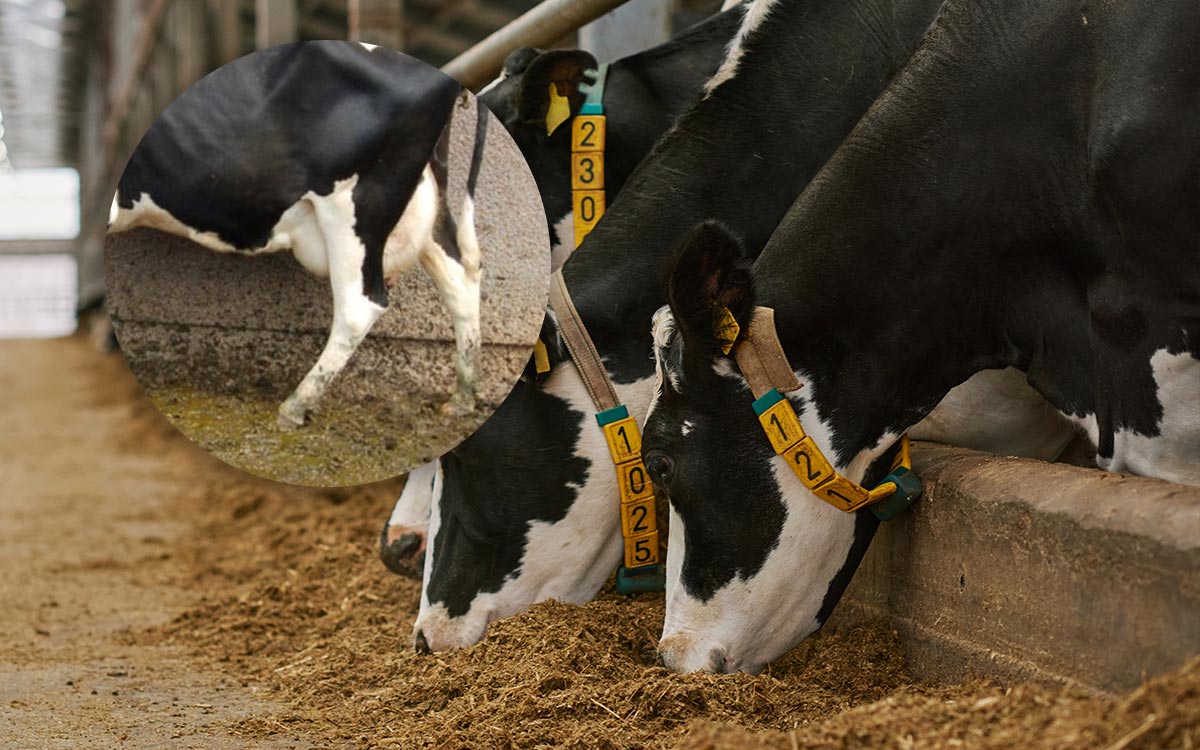The natural environment scenario (Figure 1)
The fact is that pasture cows have little, if any, sole horn. I’d like to include here dry cows and heifers inhabiting a dry environment. In these animals, the sole horn gets so dry that it starts flaking and falls out.soft surface
However, the wall horn is different. It’s a harder structure and remains intact most of the time. Take a look at the drawing of a “pasture hoof.” You can see that its wall will sink into the dirt until the bottom of the sole also starts carrying weight. As a result, we get weight distribution across the entire surface.
We call this a footprint. The same thing happens when you walk barefoot on the beach. Your footprint in the sand feels relaxing, doesn’t it? That’s because your foot sinks so deep in the sand that all of it carries your weight (even the arch) and the sand fills the gaps.
This also happens with cows in a natural environment. In short, their claws adjust to the soft surface.

The cement flooring scenario (Figures 2 and 3)
A shaped foot, with only the wall on the outside of the claw, will never sink down in cement as it does on a soft natural surface. Therefore, we have a tremendous weight load on the walls. The sole hangs, as it were, above the concrete flooring, never touching the surface. Because of this, it never carries any weight. However, the pedal bone (the bone in the hoof) stands on the sole.
At this point, we may see some lameness concrete surface optimal weightoccurring in pasture hooves that move into a new environment. Do your best to prevent it and provide these animals with timely trimming adjustments and environmental changes. If necessary, seek advice from your local hoof trimmer or veterinarian.


More on the hoof trimming part (Figure 4)
Let me finish with a few pointers on how far you should shape or model the sole of the claw.modeling example To fill the void I described above, you need to leave enough sole horn to produce counter-pressure. Balancing the two claws for weight distribution is extremely important and you should do it regularly. Some slight modelling will be necessary to determine if problems could arise. You can thus prevent potential issues from getting out of hand. However, overdoing this modelling, even up to the wall, will produce counter-effects on cement flooring. It’s better to play it safe otherwise you run the risk of causing lameness. If you have any questions or suggestions, please contact me through our Contact page. You can also download a printable version of this article – great for sharing with others.




